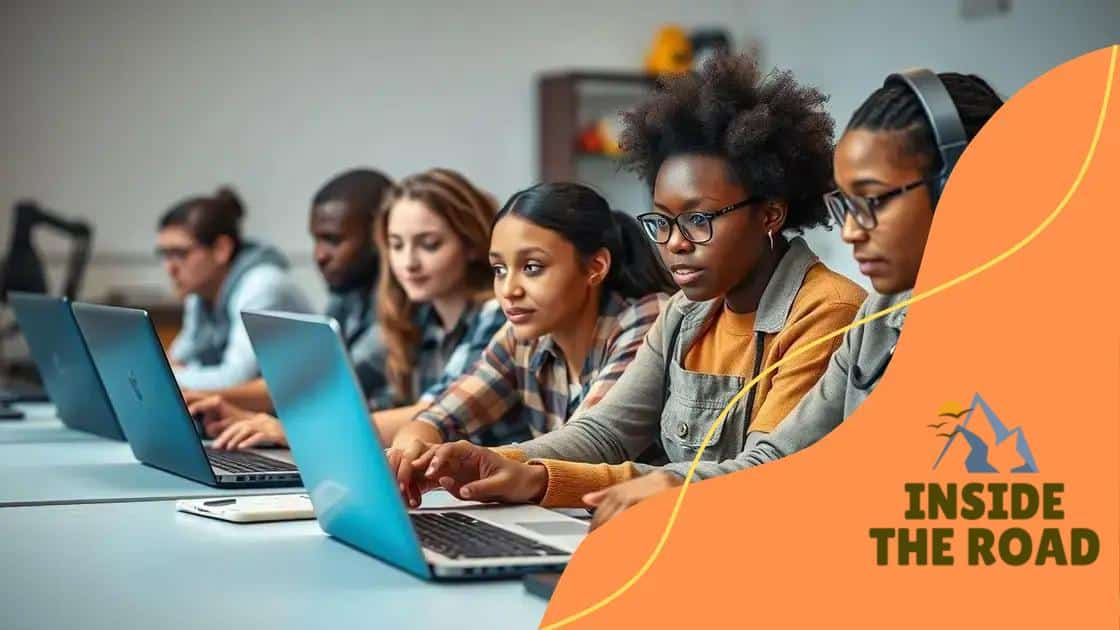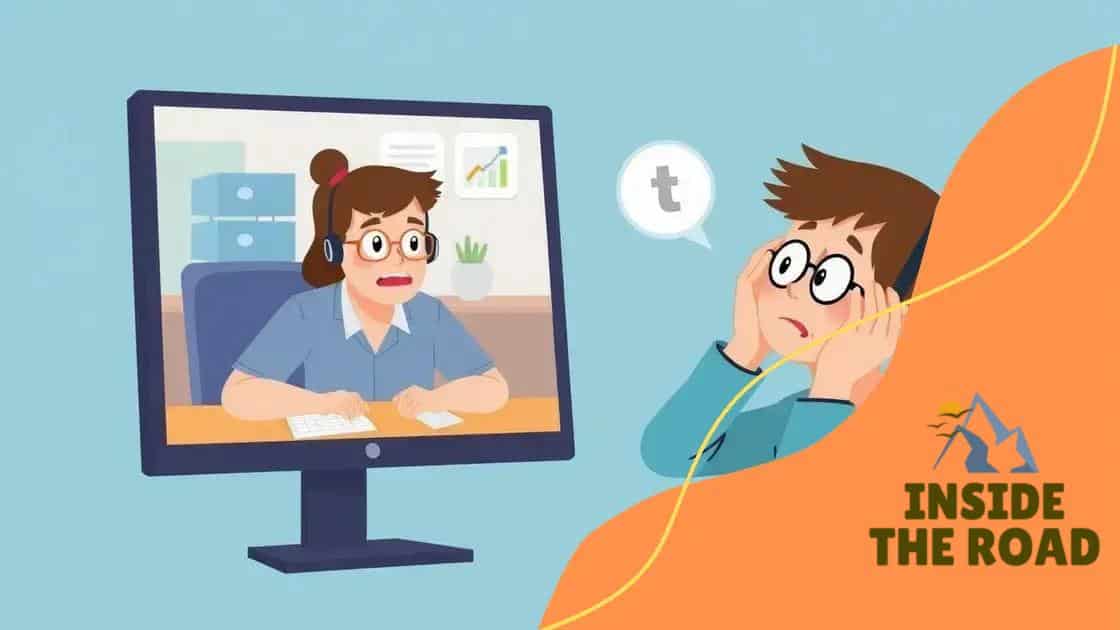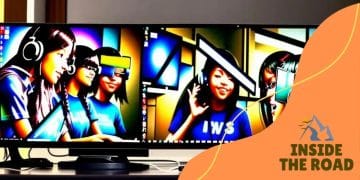Trends in remote learning for vocational training

Trends in remote learning for vocational training include the use of virtual reality, personalized learning experiences, and a focus on soft skills to prepare students for the evolving job market.
Trends in remote learning for vocational training are reshaping how skills are taught and learned. Have you noticed the shift in how education is delivered? This article dives into the innovative techniques revolutionizing vocational training.
The rise of online platforms in vocational training
The rise of online platforms in vocational training has revolutionized the way individuals acquire skills. With the advancements in technology, learning has become more accessible than ever. Students can now engage in courses at their own pace and from the comfort of their homes.
Benefits of Online Platforms
Online platforms provide numerous advantages for vocational training. These benefits include:
- Flexibility: Learners can choose when and where to study.
- Diverse Resources: Access to a wide range of materials and courses.
- Cost-Effective: Many platforms offer free or affordable courses.
- Interactive Learning: Features like quizzes and forums enhance engagement.
Furthermore, online courses often incorporate videos, interactive assignments, and discussions. This variety helps maintain interest and aids in understanding complex topics. As a result, students can learn practical skills that are directly applicable to their careers.
Popular Online Platforms
Several online platforms have gained popularity for vocational training:
- Coursera: Collaborates with universities to offer recognized courses.
- Udacity: Focuses on tech skills with industry partnerships.
- LinkedIn Learning: Provides professional development courses.
These platforms not only offer courses but also allow students to connect with industry experts. This networking opens up job opportunities for learners, making online education a valuable tool for career growth. The impact of online platforms on vocational training is remarkably positive, creating a more skilled workforce ready to meet the demands of today’s job market.
Best practices for engaging remote learning
Engaging students in remote learning can be challenging, but adopting best practices for engaging remote learning can make a big difference. By implementing effective strategies, educators can create a supportive and interactive online environment that fosters learning.
Use Interactive Tools
Incorporating interactive tools into the curriculum is vital. Tools such as quizzes, polls, and breakout rooms can increase participation.
- Quizzes: These can test knowledge and reinforce learning.
- Breakout Rooms: Allow students to collaborate in smaller groups.
- Discussion Boards: Encourage students to share ideas and feedback.
These tools not only make learning more enjoyable but also create opportunities for students to engage with their peers and instructors. Effective participation helps learners feel more connected to the material.
Establish Clear Communication
Clear communication is crucial in remote learning. Setting expectations for students and encouraging open dialogue can enhance their experience. Regular check-ins through emails or virtual office hours help students stay informed and supported.
Furthermore, providing constructive feedback on assignments can motivate learners. It’s essential to ensure that students understand their goals and how to achieve them. When students feel guided, they are more likely to engage actively in the learning process.
Using a variety of multimedia resources, such as videos and podcasts, also captures attention. By presenting information in different formats, educators can reach a broader audience and cater to various learning styles.
An engaging remote learning environment relies on creativity and flexibility. Educators are encouraged to adapt to the needs of their students, continually looking for new ways to enhance engagement. Remember, when students are involved and enthusiastic, learning becomes a much more rewarding experience.
Challenges faced by learners and educators

Both learners and educators face unique challenges in remote learning. Understanding these obstacles is crucial for creating effective strategies that enhance the online education experience. Many students struggle with motivation and engagement when learning from home.
Motivation and Engagement
Staying motivated can be difficult without the structure of a traditional classroom. Students may find distractions around them, which can lead to decreased focus. To combat this, educators can implement techniques that encourage participation.
- Set Clear Goals: Help students understand what they need to achieve.
- Implement Regular Check-ins: Maintain communication and offer support.
- Create Interactive Content: Use videos, quizzes, and group work to foster interest.
Additionally, some learners may feel isolated without face-to-face interaction with peers and instructors. This isolation can hinder their learning experience, making it challenging to form connections.
Technological Issues
Another significant challenge is the reliance on technology. Not all students have equal access to devices or stable internet connections. This disparity can create an uneven playing field.
Some common tech-related issues include connectivity problems, lack of devices, and unfamiliarity with online platforms. Schools and educators must work to provide resources and support to overcome these barriers. Offering technical assistance and guidance can help learners feel more comfortable in the digital environment.
Moreover, educators also face their own challenges. They need to adapt their teaching methods to suit online formats. This shift requires learning new technologies and finding innovative ways to keep students engaged. Teaching remotely can be intensively time-consuming as instructors must plan interactive lessons and provide timely feedback.
Despite these challenges, both learners and educators can find ways to thrive in a remote learning setting. By focusing on supportive strategies and adapting to the new landscape, they can work together to overcome obstacles and enhance the educational experience.
Technological advancements enhancing remote education
Technological advancements are playing a crucial role in enhancing remote education. The integration of new tools and platforms has transformed the learning landscape, making education more accessible and engaging for students worldwide.
Low-Cost Learning Tools
Many affordable tools have emerged, allowing both educators and learners to benefit from technology without significant financial burdens. Free online resources, such as video conferencing tools and learning management systems, are now widely available.
- Zoom: This platform allows for real-time video meetings, fostering interaction.
- Google Classroom: An intuitive interface for managing assignments and communication.
- Kahoot!: A fun tool for creating interactive quizzes and games.
These tools not only improve engagement but also make learning interactive and entertaining. Students can participate in activities that motivate them to learn.
Adaptive Learning Technologies
Another innovation is the development of adaptive learning technologies. These tools customize educational content based on students’ individual needs, pacing, and learning styles.
For instance, platforms like DreamBox and IXL adjust their lessons in real-time. They provide feedback based on a student’s performance, ensuring a tailored learning experience that can help bridge knowledge gaps.
This personalized approach enables learners to master concepts before moving on, enhancing their understanding and retention. Moreover, adaptive technologies help instructors identify areas where students struggle, allowing them to offer targeted support.
In addition, artificial intelligence (AI) continues to influence remote education. AI-driven chatbots can answer student queries 24/7, providing instant support and freeing up educators’ time. This technology ensures that students receive assistance and guidance whenever they need it.
Overall, these advancements are reshaping the remote learning experience. As technology develops, we can expect even more innovative tools that cater to the diverse needs of learners, making education more effective and enjoyable.
Future predictions for vocational training
The future predictions for vocational training are increasingly optimistic as technology continues to evolve. As industries change, the demand for skilled workers will rise. Vocational education will need to adapt to keep up with these shifts.
Integration of Virtual Reality
One major trend is the incorporation of virtual reality (VR) and augmented reality (AR) into vocational training programs. These technologies can create immersive learning experiences that simulate real-world scenarios.
- Hands-On Learning: VR allows students to practice skills in a safe environment.
- Realistic Scenarios: AR provides interactive experiences linked to theoretical knowledge.
- Enhanced Engagement: Both VR and AR make learning more engaging and fun.
As VR technology becomes more accessible, vocational training institutions will likely integrate these methods into their curricula. This will help prepare students for hands-on careers, such as in healthcare, construction, and hospitality.
Personalized Learning Experiences
Another key prediction is the move towards personalized learning experiences. With the help of data analytics and artificial intelligence, training programs can adapt to individual students’ needs. This tailored approach can help learners master skills at their own pace.
For example, adaptive learning platforms can assess a student’s performance and customize the material accordingly. This ensures that each student receives the right support and resources, making vocational training more effective.
Additionally, the emphasis on soft skills will increase. In the future, employers will seek workers who can communicate effectively and work collaboratively. Vocational training programs will likely incorporate soft skills training into their curricula to better prepare students for the workforce.
As online learning continues to gain popularity, hybrid models of education will also emerge. These models combine in-person classes with online components, giving students flexibility while maintaining valuable hands-on experience.
In summary, the future of vocational training looks promising, with technology driving innovation and adapting to the needs of students and employers alike. By focusing on immersive experiences and personalized learning, vocational education will play a vital role in preparing the workforce of tomorrow.
In conclusion, the landscape of vocational training is changing rapidly due to technological advancements and evolving educational practices. Integration of virtual and augmented reality, personalized learning experiences, and a focus on soft skills are key trends shaping the future. As we embrace these changes, both educators and students will benefit from a more engaging, flexible, and effective learning environment. By preparing for these shifts, we can ensure that vocational training remains relevant and impactful in the years to come.
FAQ – Frequently Asked Questions about Vocational Training Trends
What role does technology play in vocational training?
Technology enhances vocational training by providing interactive tools, personalized learning experiences, and access to resources that make education more engaging and effective.
How is virtual reality used in vocational training?
Virtual reality creates immersive learning experiences that allow students to practice skills in realistic scenarios, improving their hands-on learning and retention of information.
Why is personalized learning important in vocational education?
Personalized learning tailors education to individual students’ needs, ensuring they receive the right support and resources to master skills at their own pace.
What are the future trends in vocational training?
Future trends include the integration of advanced technologies like VR and AR, a focus on soft skills, hybrid education models, and adaptive learning platforms that cater to diverse learning styles.






